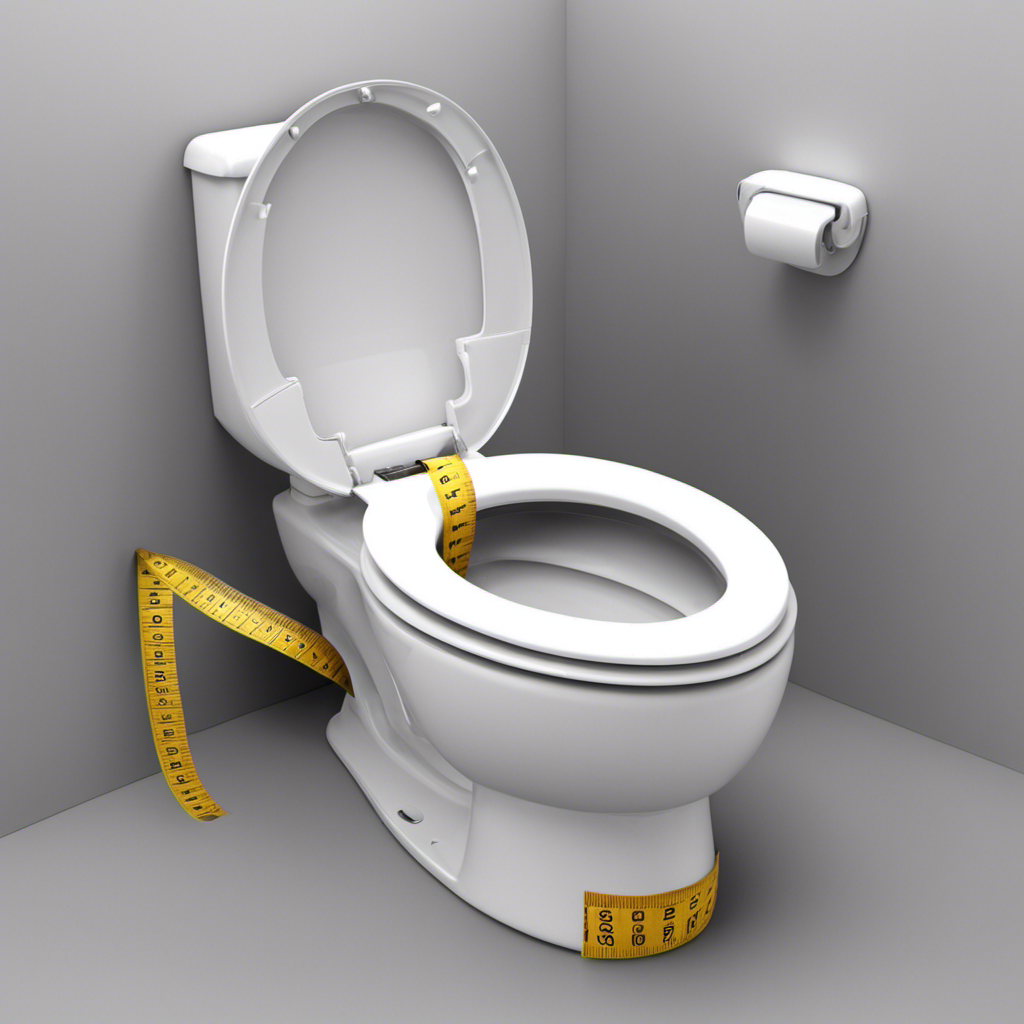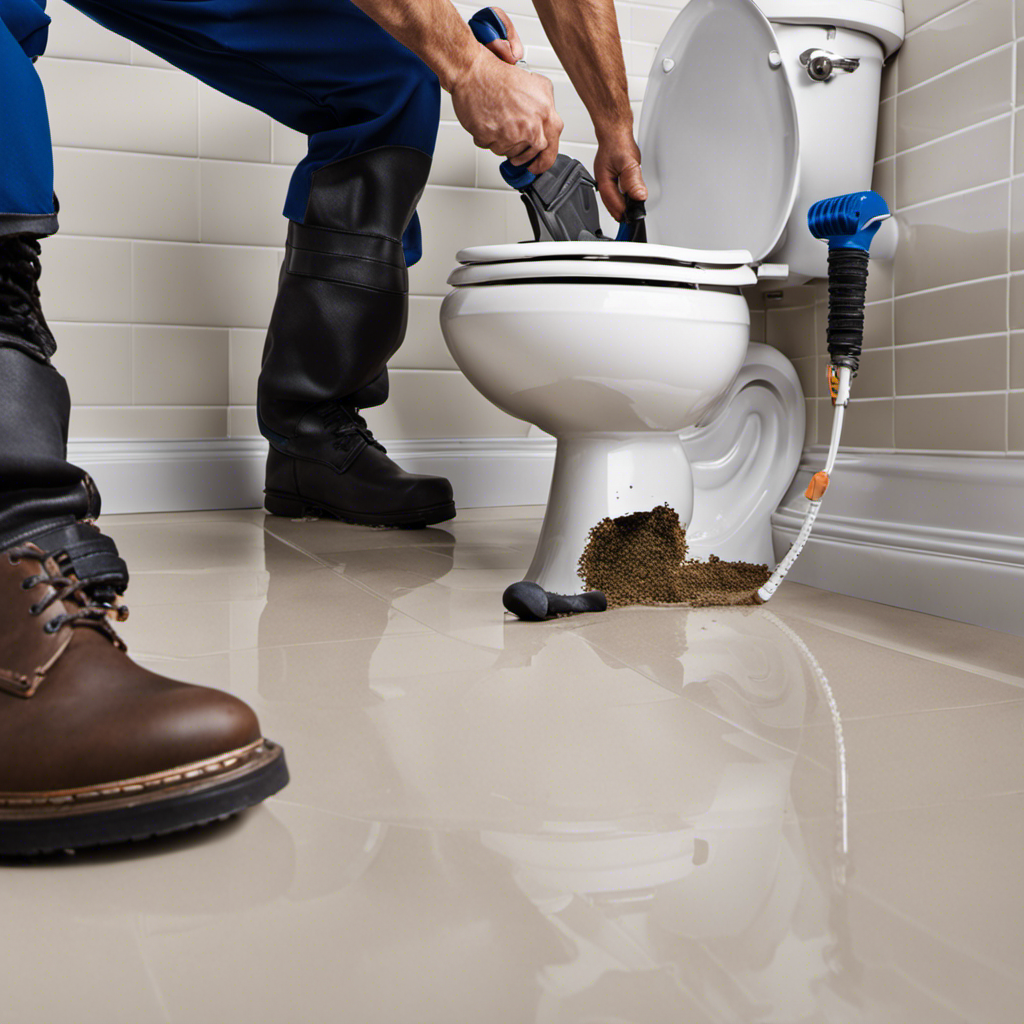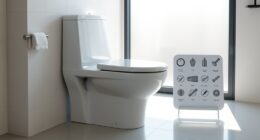I’ve often found myself frustrated with a toilet bowl that doesn’t have enough water in it. It’s not only inconvenient, but it can also impact the functionality of the toilet.
In this article, I will guide you through the steps to raise the water level in your toilet bowl.
From checking the water supply to adjusting the float level, cleaning the inlet valve, and even replacing the fill valve, I’ll provide you with the technical knowledge and detailed instructions you need to solve this issue.
Key Takeaways
- Ensure the water valve supplying the toilet is fully open
- Adjust the float level to control the water level in the bowl
- Clean the inlet valve to remove buildup or debris
- Seek professional help if unsure or encountering difficulties
Checking the Water Supply
You should start by checking if there’s enough water supply to raise the water level in your toilet bowl. Troubleshooting leaks and water pressure issues are common problems that can affect the water level in your toilet.
First, ensure that the water valve supplying the toilet is fully open. If it’s partially closed, it can restrict the flow of water and result in a low water level.
Additionally, check for any leaks in the water supply line or the toilet tank. Leaks can lead to a loss of water and prevent the bowl from filling up properly. If you notice any leaks, you may need to replace faulty parts or tighten connections.
Adjusting the Float Level
To adjust the float level, simply turn the adjustment screw clockwise until the desired water level is reached. Increasing water pressure and adjusting the flapper valve are two important factors to consider when raising the water level in a toilet bowl. The float level determines how much water flows into the toilet tank, which ultimately affects the water level in the bowl. By adjusting the float level, you can control the water level and ensure it is at the desired height.
To help you understand the impact of adjusting the float level, here is a table that illustrates the relationship between the float level and water level in the toilet bowl:
| Float Level | Water Level in Bowl |
|---|---|
| Low | Low |
| Medium | Medium |
| High | High |
Cleaning the Inlet Valve
To clean the inlet valve, start by shutting off the water supply to the toilet. This is important to prevent any leaks or water damage during the cleaning process.
Once the water supply is turned off, flush the toilet to drain any remaining water in the tank.
Next, locate the inlet valve, which is usually located on the bottom side of the toilet tank. Use a wrench to loosen the nut connecting the water supply line to the inlet valve.
Once the nut is loose, remove the water supply line. Now, take a small brush or toothbrush and scrub the inlet valve to remove any buildup or debris that may be causing clogs or leaks. Make sure to clean both the inside and outside of the valve.
Once the valve is clean, reattach the water supply line and tighten the nut. Finally, turn on the water supply and check for any leaks. If there are no leaks, you have successfully cleaned the inlet valve.
Now, let’s move on to the next step, which is replacing the fill valve.
Replacing the Fill Valve
Now, it’s time to replace the fill valve with a new one. The fill valve is responsible for refilling the toilet tank after each flush, ensuring a proper water level. If you’re experiencing low water levels or leaks, it’s likely that the fill valve needs to be replaced.
Here are the steps to replace the fill valve:
- Turn off the water supply to the toilet by shutting off the valve located behind the toilet.
- Flush the toilet to drain the tank completely.
- Disconnect the water supply line from the bottom of the fill valve.
- Unscrew the nut holding the fill valve in place and remove the old valve.
Seeking Professional Help
If you’re unsure about the process or encounter any difficulties, it’s best to seek professional help to avoid causing further damage. Finding local plumbers for your plumbing needs can be a daunting task, but it’s essential to choose the right one to ensure a successful outcome. To make your search easier, here is a table outlining the steps you can take to find a reliable plumber:
| Step | Action |
|---|---|
| 1 | Ask for recommendations from friends, family, or neighbors. |
| 2 | Check online directories and read customer reviews. |
| 3 | Contact your local plumbing association for a list of licensed plumbers. |
| 4 | Request multiple quotes from different plumbers to compare prices and services. |
| 5 | Verify the plumber’s credentials and insurance coverage before hiring. |
Understanding the costs of professional help is crucial to avoid any unexpected expenses. The cost of hiring a plumber can vary depending on factors such as the complexity of the job, the time required, and the plumber’s experience. It’s advisable to request an estimate or a detailed breakdown of the costs involved before starting the work. Keep in mind that paying a little extra for a skilled and reputable plumber can save you money in the long run by preventing future issues and ensuring quality workmanship.
Conclusion
After following these steps to raise the water level in your toilet bowl, you can now enjoy a fully functioning and efficient toilet.
Imagine the satisfaction of flushing and watching the water level rise to the perfect height, ensuring a clean and complete flush every time.
By checking the water supply, adjusting the float level, cleaning the inlet valve, and replacing the fill valve if necessary, you have taken the necessary steps to maintain a properly functioning toilet.
If you encounter any difficulties, don’t hesitate to seek professional help to ensure your toilet is in top-notch condition.










